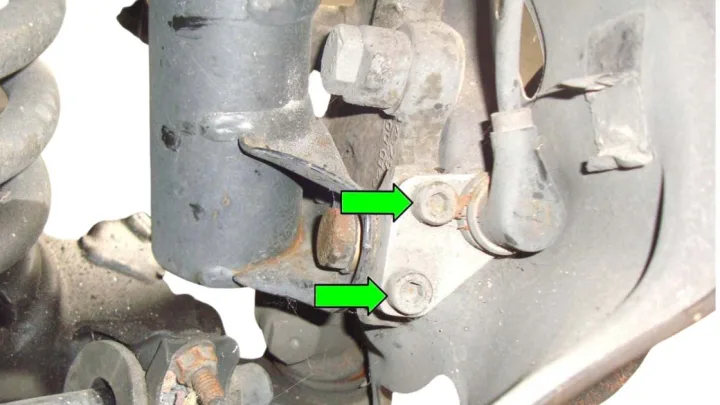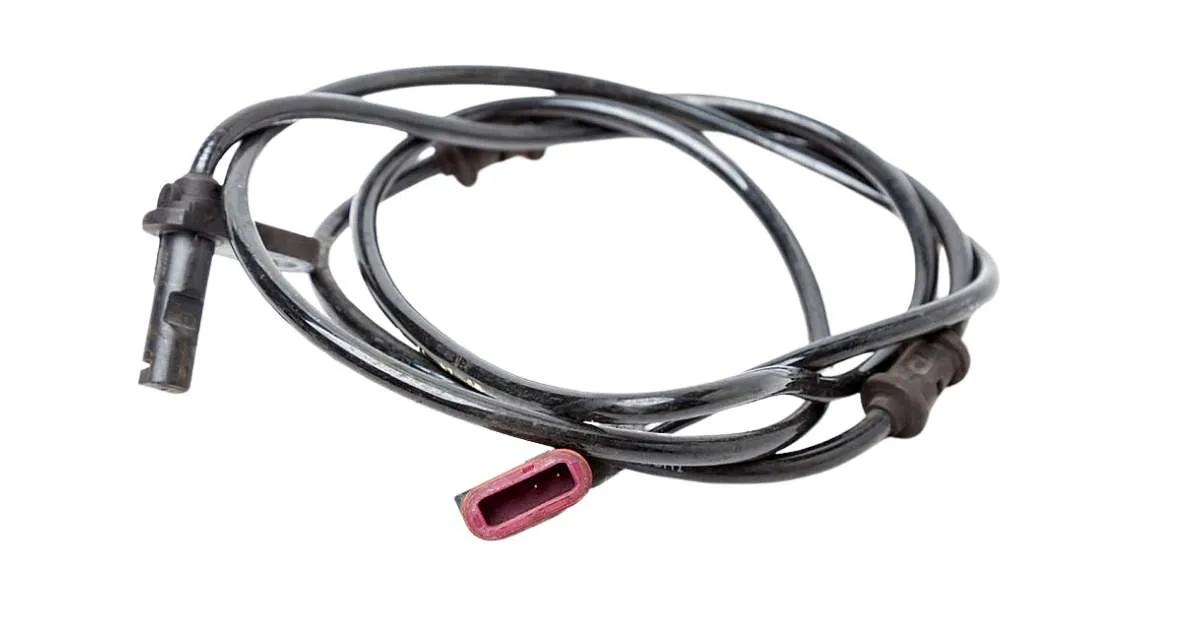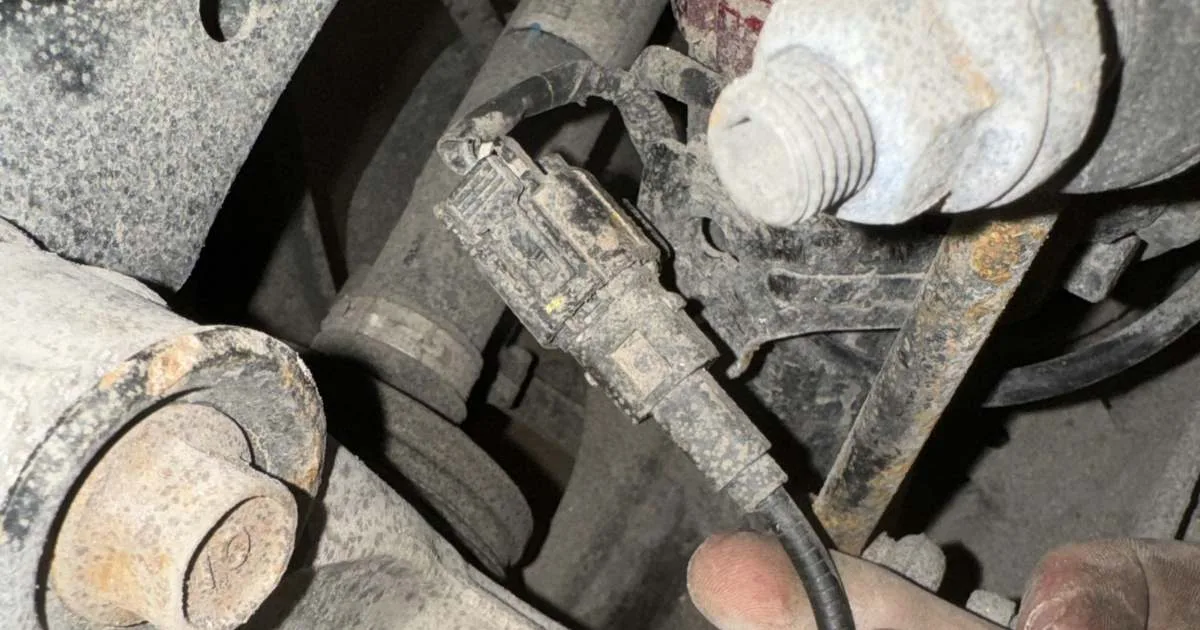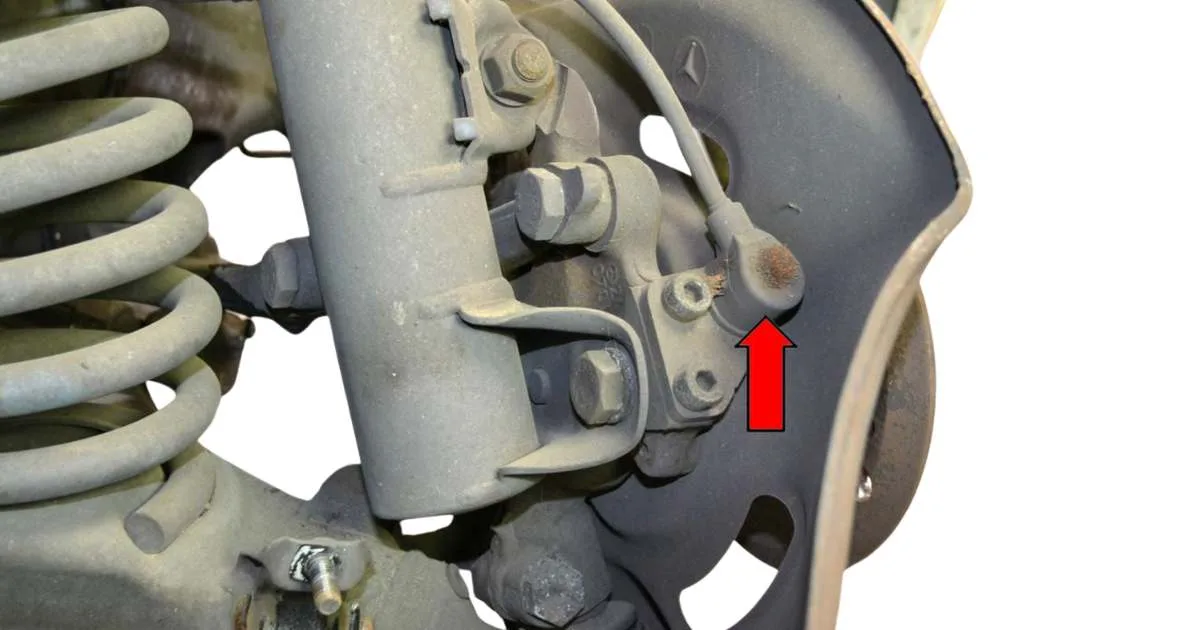
A wheel speed sensor plays a crucial role in a Mercedes' safety system. It monitors wheel rotation speed, crucial for systems like ABS and traction control.
The smooth operation of your Mercedes depends on the accurate functioning of wheel speed sensors. These intricate components ensure that your vehicle's computer receives precise data to maintain stability and braking efficiency. Spotting symptoms of a faulty sensor early can save you from potential safety hazards and costly repairs. Imagine cruising down the highway in your Mercedes, confident in its renowned engineering and safety features. However, even the most well-crafted vehicles can experience technical hiccups, and the wheel speed sensor is no exception. This sensor is the silent guardian that helps manage your car's anti-lock braking system, ensuring each wheel's speed aligns with your driving inputs. But what happens when it starts to fail? Knowing the signs can mean the difference between a smooth ride and an untimely visit to the mechanic. This introduction will guide you through the common symptoms of a malfunctioning wheel speed sensor in a Mercedes, ensuring you're equipped to recognize trouble before it escalates.Introduction To Wheel Speed Sensors In Mercedes
Mercedes cars are known for their precision and performance. A key part of this is the wheel speed sensor. These sensors are vital for the smooth running of your car. They send important data to the car's computer system. Understanding how they work can help keep your Mercedes in top shape.The Role Of Wheel Speed Sensors
Wheel speed sensors are crucial for your Mercedes. They monitor how fast each wheel spins. This info helps manage the car's stability and braking systems. It's a small part, but it does a big job for driving safety.Importance In Vehicle Safety And Performance
Safety and performance go hand in hand in a Mercedes. The wheel speed sensors play a big role here. They help with anti-lock braking and traction control. This means better control on the road, no matter the weather. Common Symptoms Of A Faulty Wheel Speed Sensor
Common Symptoms Of A Faulty Wheel Speed Sensor
Common Symptoms Of A Faulty Wheel Speed Sensor
Driving a Mercedes should feel smooth and safe. But, a faulty wheel speed sensor can change that. This sensor helps manage your car's ABS system and speedometer. When it fails, you'll notice some clear signs.Abs Light Illumination
The first sign is the ABS light turning on. This light on your dashboard means there's a problem with the Anti-lock Braking System. The system might not work right. This makes stopping your car harder, especially on slippery roads.Erratic Speedometer Readings
Another common symptom is speedometer issues. Your speedometer might show wrong speeds. It could jump up and down or show zero even when driving. This happens because the sensor isn't sending the right speed info to your car's computer. Both these issues point to a faulty wheel speed sensor. Ignoring these signs can lead to bigger problems. It's best to check your car if you see these symptoms. https://www.youtube.com/watch?v=MZN9SLV559wImpact On Anti-lock Braking System (abs)
The Anti-lock Braking System (ABS) is crucial for driver safety. Wheel speed sensors in a Mercedes play a vital role in this system. They monitor each wheel's rotation speed. This data helps prevent wheel lock-up during braking. A faulty sensor can compromise the entire ABS function.Abs Malfunction During Braking
Imagine pressing the brake pedal during an emergency. You expect your car to stop smoothly. With a bad wheel speed sensor, this might not happen. ABS relies on accurate wheel speed data. If the data is off, the ABS can't adjust the braking pressure properly. This can lead to longer stopping distances or uncontrolled skidding. It's a scary thought, especially in wet or icy conditions.Potential Risks Of Abs Failure
An ABS failure can be dangerous. It can lead to wheel lock-up and loss of traction. This makes steering hard during sudden stops. Imagine sliding uncontrollably on a busy road. That's a risk no one should take. Regular checks of your wheel speed sensors can help avoid this. Safe driving depends on a fully working ABS. So, it's best to fix sensor issues fast.Traction Control Troubles
Mercedes cars come with advanced traction control systems. These systems help drivers stay safe on slippery roads. A wheel speed sensor is a key part of this system. It measures how fast the wheels are turning. If this sensor fails, it can cause traction control issues. Let's dive into some common symptoms you might notice.Traction Control Errors
Trouble with traction control often starts with dashboard warnings. A light may come on that says "Traction Control" or shows a skidding car icon. This could mean there's a problem with the wheel speed sensor. It's telling you the system is not working right. The car's computer may also store error codes. A mechanic can read these codes to find the issue.Effect On Vehicle Stability
When the sensor fails, stability takes a hit. The traction control system may not kick in when needed. This can make the car slide or skid during turns. It can also happen when you speed up or slow down. In wet or icy conditions, this is a real safety risk. It's important to get these symptoms checked out right away. Cruise Control Complications
Cruise Control Complications
Cruise Control Complications
Cruise Control Complications can arise in your Mercedes due to faulty wheel speed sensors. These sensors play a crucial role in managing your car's cruise control. Let's dive deeper into how these malfunctions manifest.Cruise Control Dysfunction
When wheel speed sensors fail, cruise control may not engage. This system relies on accurate speed data to function. Without it, cruise control can't maintain the car's speed effectively.Inconsistent Vehicle Speed Maintenance
A clear sign of trouble is inconsistent speed maintenance. Your car might speed up or slow down unexpectedly. This inconsistency is not only annoying but can also be dangerous.- Speed fluctuations - Your car's speed changes without input.
- System disengagement - Cruise control turns off by itself.
- Failure to activate - The system won't turn on when you try.
Diagnostic Trouble Codes (dtcs)
Mercedes vehicles are high-tech, with systems to monitor performance. The wheel speed sensor is key for stability and brake control. Problems here trigger Diagnostic Trouble Codes, or DTCs. These codes help pinpoint issues, guiding repair work for skilled technicians.Reading And Interpreting Dtcs
When a Mercedes wheel speed sensor fails, the car’s computer logs a DTC. These codes appear when you connect a scanner to the vehicle's diagnostic port. Mechanics use these codes to find and fix the problem fast.Common Mercedes Wheel Speed Sensor Codes
Several DTCs can signal trouble with a Mercedes wheel speed sensor. For example, codes like "ABS" and "ESP" often point to speed sensor issues. These codes indicate which wheel is having problems, so repairs can start there.Physical Inspection Clues
When checking your Mercedes for issues, don't skip a physical look at the wheel speed sensor. This part plays a key role in your car's performance. Knowing what to search for could save you time and money. Let's dive into the physical inspection clues that may signal trouble.Visible Damage To The Sensor
First, inspect the sensor itself. It should be clean and free from damage. Look for cracks, wear, or any signs of impact. A damaged sensor might not read wheel speed accurately. This can affect your Mercedes' ABS system and traction control.- Check for any physical damage.
- Ensure it’s clean and intact.
Wiring And Connection Issues
Next, examine the sensor's wiring and connections. These should be secure and free from corrosion. Loose or corroded connections can cause faulty signals. This leads to errors in speed reading.- Look at the wiring closely.
- Check for loose or corroded connections.
 Professional Diagnosis And Repair
Professional Diagnosis And Repair
Professional Diagnosis And Repair
Recognizing the symptoms of a faulty wheel speed sensor in your Mercedes is just the first step. Trusting a professional for diagnosis and repair is crucial. Experts have the right tools and knowledge to pinpoint the issue. They make sure your Mercedes stays safe and reliable on the road.Benefits Of Expert Assessment
An expert eye reduces the risk of misdiagnosis. This saves time and money. Specialists use advanced diagnostics to assess the sensor's condition. They ensure accurate findings. Their experience helps them spot related issues that might go unnoticed otherwise.Typical Repair Solutions And Costs
Repair solutions range from simple to complex. A sensor replacement could be all that's needed. Sometimes, wiring fixes are necessary. Costs vary based on the repair scope. Labor and parts can affect the total. Yet, fixing problems early often leads to lower expenses.Preventive Measures And Maintenance Tips
Experiencing odd brake behavior in your Mercedes? It might be a faulty wheel speed sensor. Regular checks and timely maintenance can keep your vehicle's speed sensors in top condition, ensuring safer driving. Wheel speed sensors are vital for your Mercedes' safety and performance. They monitor wheel speed and help with ABS function and stability control. Proper care can prevent malfunctions. Here are ways to keep these sensors in check.Regular Sensor Maintenance
Keeping wheel speed sensors clean is crucial. Dirt and debris can cause false readings. It's best to check them often. A simple wipe during routine service will do. This ensures accurate speed readings. It also helps maintain traction control effectiveness.Upgrading To High-quality Sensors
Consider high-quality sensor replacements. They last longer and perform better. Quality sensors reduce the chance of unexpected failures. They provide consistent readings. This leads to safer drives and fewer surprises on the road. Credit: www.youtube.com
Credit: www.youtube.com
Frequently Asked Questions
What Are Common Wheel Speed Sensor Symptoms In Mercedes?
Wheel speed sensor issues in Mercedes often manifest as ABS light activation, erratic speedometer readings, or loss of traction control. These symptoms indicate the sensor's failure to accurately monitor wheel speed, affecting the car's braking and stability systems.How Does A Faulty Wheel Speed Sensor Affect Driving?
A faulty wheel speed sensor compromises the ABS, traction control, and stability systems, leading to increased stopping distances, reduced traction, and impaired handling. It's crucial for safe driving, especially under harsh conditions.Can A Bad Wheel Speed Sensor Trigger Warning Lights?
Yes, a malfunctioning wheel speed sensor can trigger the ABS and traction control warning lights on the dashboard. This alerts the driver to potential issues with the vehicle's braking and stability systems, necessitating a check-up.What Is The Lifespan Of A Mercedes Wheel Speed Sensor?
The lifespan of a Mercedes wheel speed sensor varies, but it typically lasts between 50,000 to 100,000 miles. Factors like driving conditions, maintenance, and vehicle model can affect its durability.Conclusion
Recognizing the signs of a faulty wheel speed sensor in your Mercedes is key. Your safety depends on it. Strange ABS light signals? Unexpected braking issues? These could point to sensor trouble. Don't ignore these warnings. Regular checks keep your vehicle running smoothly. Trust a professional for repairs. They know your car best. Remember, a healthy sensor means a safer drive. Stay vigilant and drive with confidence. Keep your Mercedes in top shape for the road ahead.Disclosure
Some links may be affiliate links. That means we may earn a small commission at no extra cost to you.